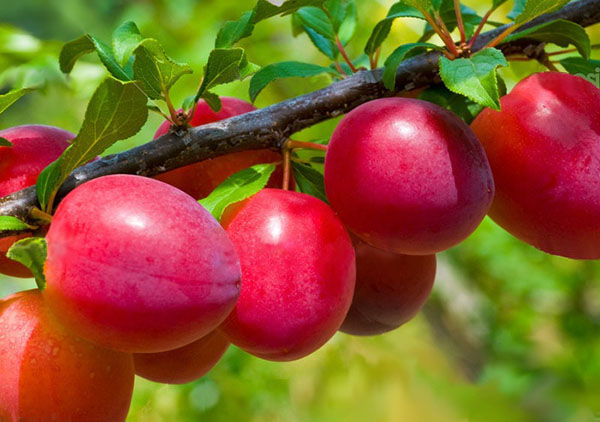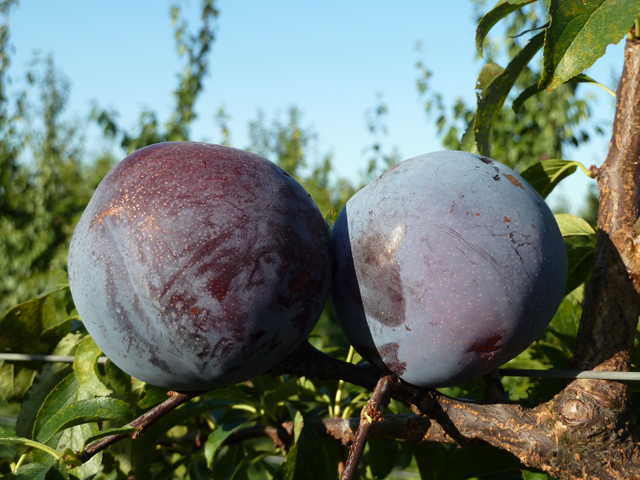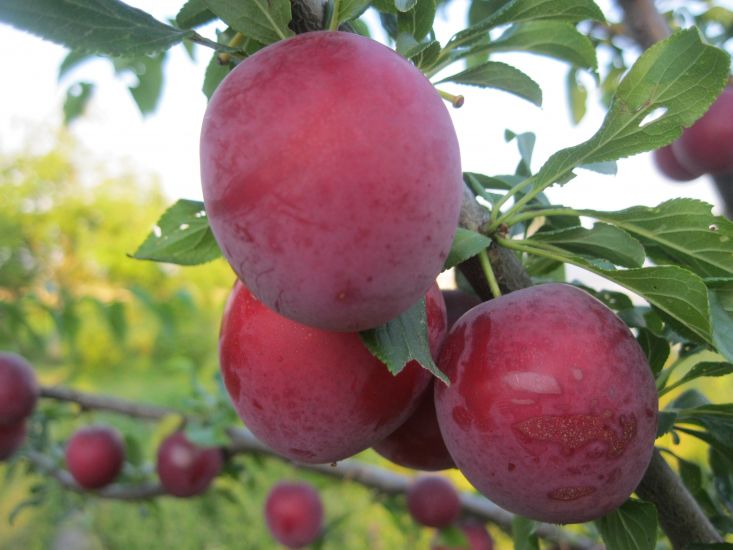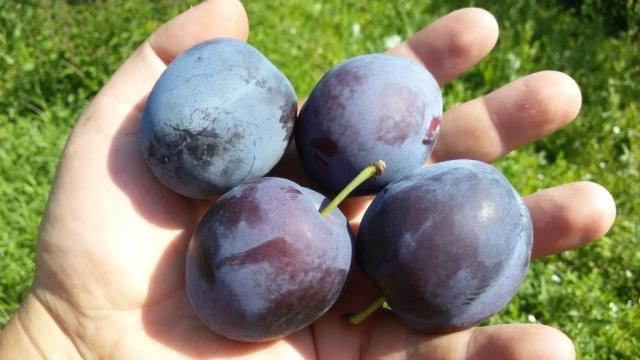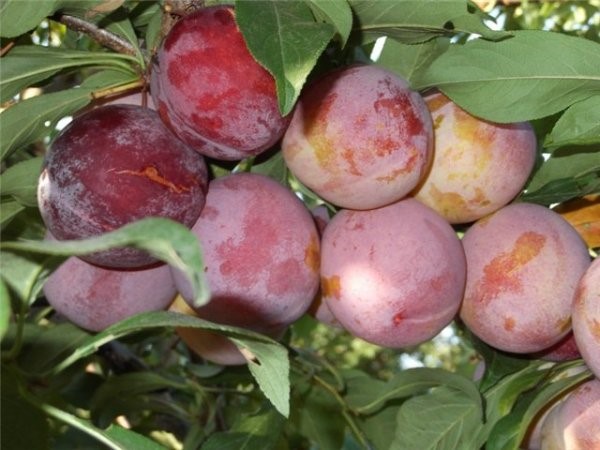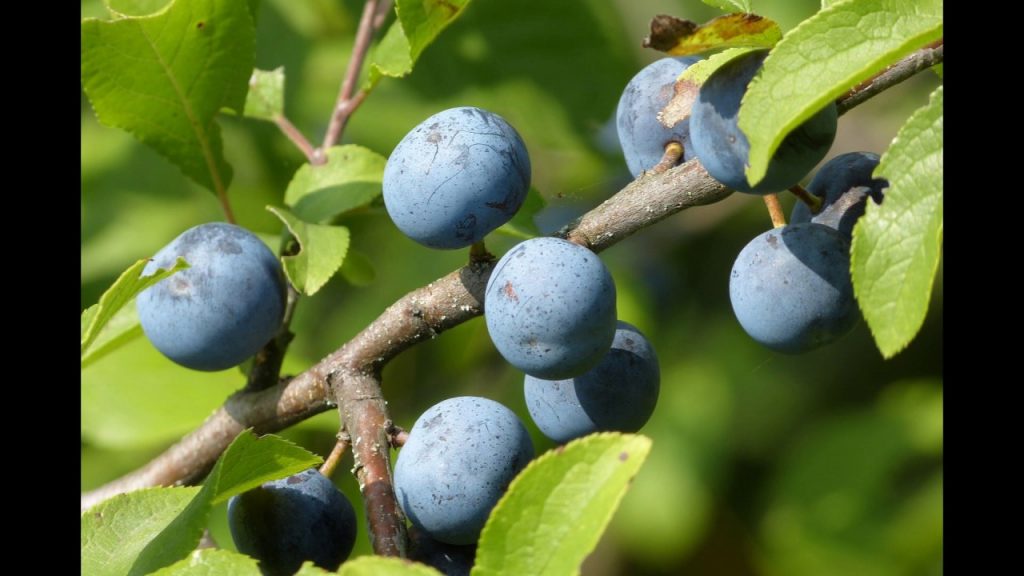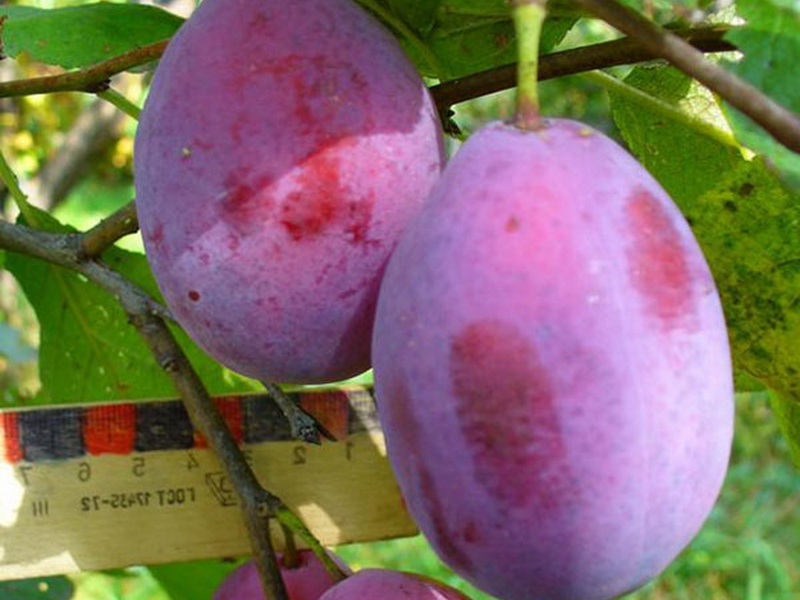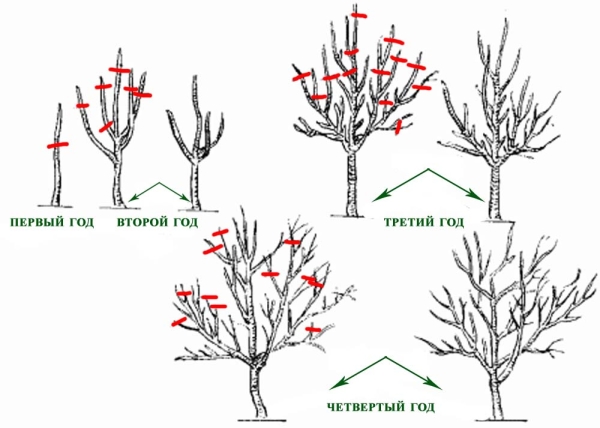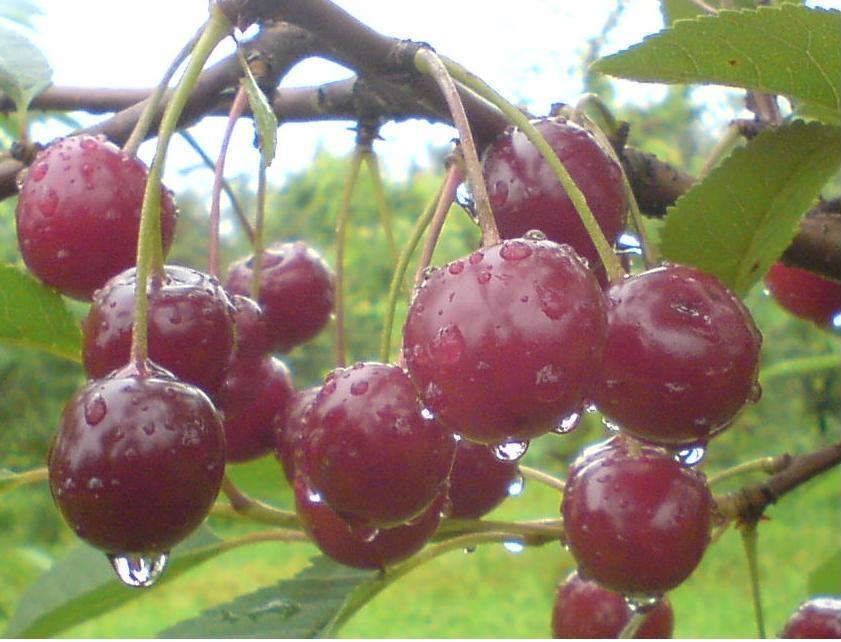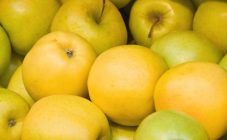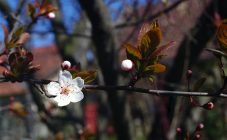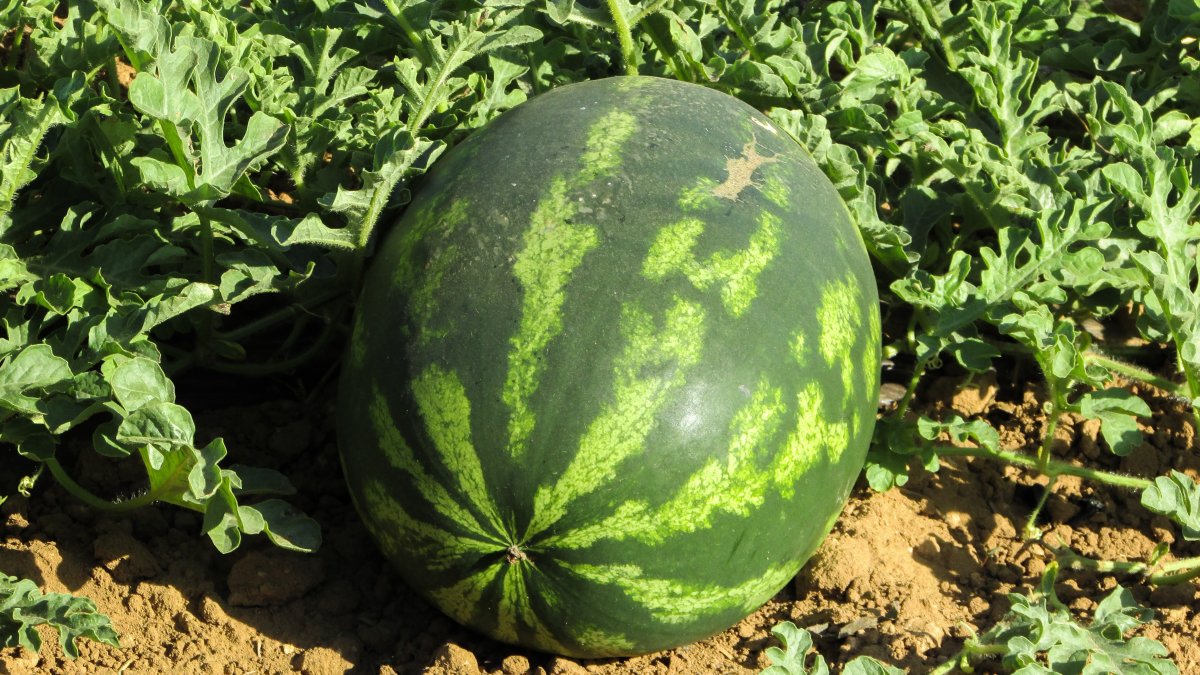Plum is a whimsical and difficult culture to grow. But thanks to scientists, varieties were developed that are suitable for the middle lane and for the Moscow region.
The best plum varieties for central Russia
The varieties are equally resistant to climatic surprises, but differ in characteristics.
Plum Alderman
Advantages: unpretentious, frost-resistant, a large number of flowers with a pleasant aroma of white color, plum is harvested at the end of summer, the fruits are red. Consumed fresh and for canning. The crown is round. The height of the tree is about 6 meters. They are planted in sunny places. The soils must be drained. It bears fruit in a year.
Plum Fortuna
Early maturing culture. Ripens in the 2nd decade of July - the first half of August. Large-fruited plums, weighing up to 70 grams. The color of the fruit is pink-red with a thin bloom. The shape is round, pointed at the end. The taste is sweet, the flesh is yellow.
Alycha Vladimirskaya comet
A new variety, superior in many respects to the old ones. Medium-sized trees, the crown is wide and sparse. Produces large fruits, oval shape with a pointed end. Burgundy color with a slight bloom. The taste is sweet and sour, the pulp is bright orange. It is universal in use. It is considered early maturing, the fruits are harvested in July. Frost resistance is one of the highest, the variety is self-fertile.
Characteristics of Renklode Michurinsky plums
An ideal plum for the Yaroslavl region, as well as an excellent variety for central Russia. It is considered late maturing. The taste is sweet and sour, fruits of medium size, weighing 30 grams. The plum is round in shape, purple on the outside. The trees are medium-sized. The culture is cold-resistant. It is universal in use.
Yakhontova
It is possible to grow in the Arkhangelsk region. The variety is frost-resistant. Not susceptible to pests. Plum is medium-sized, fruits weighing 35 g. Three years after planting, up to 50 kg of harvest are harvested. The pulp is yellowish, the skin is covered with a white bloom, which is easily washed off. A variety in which flowers are able to pollinate without the help of bees. Medium height tree. Harvested from the end of summer. The fruits are poorly stored.
Smolinka
Sweet and sour plum, flowers of both sexes. Fruits are egg-shaped, with firm pulp, smooth. One of the best varieties for the middle lane. It tolerates temperature changes well. The variety is high-yielding, early maturing. The volume of ripe fruits is 23 kg, weight - 40 g. It is used to prepare compote, jam, and is used fresh. Medium-sized tree, fruiting begins from the second year. It tolerates frost well enough. The crowns are wide, the trees grow widely on the site.
Oryol dream
A low-growing plum gives an excellent harvest, is unpretentious in care, relatively recently appeared in gardening. The fruits are large, round, red, with many specks under the skin. The variety is considered a table variety, medium-yielding, disease resistant, good winter hardiness. Minor disadvantages - it is difficult to separate the pulp from the bone, fibrous. Flowers of both sexes.
Ripe red (Ripe pink, Red ordinary)
They are planted in the Volga region, Western Siberia, Saratov, in the Urals, in the Nizhny Novgorod region. The trees are medium-sized, with a lush crown. Plum is winter-hardy, tolerates drought well enough. Gives high yields. Basically begins to bear fruit in the 5th year. It begins to bloom early. The maximum yield is up to 30 kg of harvest.
Fruits are medium, round, dark red with a slight bloom. The taste is sweet and sour, the flesh is greenish. Early maturing variety. Stores well during transport. They are used both for canning and for fresh food. It is necessary to water and harvest on time, otherwise the fruits will crumble.
Garden tern (Tern Tsaregradsky, Tern No. 2)
Bush plum of this variety has a wide crown. Winter hardiness is high, tolerates drought well, gives rich harvests. Blooms early. Medium-fruited plum, by weight up to 10 grams. The color of the fruit is blue-violet, the taste is sour, tart. Ripens in early autumn. Used for conservation and processing. Plums are grafted onto young shoots.
Pear-shaped
The tree is medium-sized, pyramidal. Winter hardiness is high. Good harvests are obtained from the tree every year. It begins to bloom early. Refers to large varieties of plums, the weight of the fruit is about 30 grams. Oval shape, red-violet color. The taste is sweetish with a slight sourness, the pulp is violet-yellowish. The variety is mid-season, ripening at the end of summer. Grown in all areas of the middle lane.
Agrotechnics
To get a good harvest of plums, you need to plant them properly and take good care of them.
Landing rules
In order for a tree to take root and give a good harvest, you must:
- Choose a variety that is suitable for this particular region.
- Place the plum correctly. Trees love sunny slopes where snow and water do not stagnate. You also need to observe the distance between trees: for medium-sized varieties - 2 meters, for vigorous ones - 3 m. Row spacing, respectively, 4 and 4.5 meters. Plum does not like windy places.
- Dig up the soil well for air circulation.
- In autumn, feed the soil: per square meter - 7 kg of humus, 30 g of potassium salt, 50 g of superphosphate.
- Choose the type of soil: loam or sandy loam. Groundwater should be no closer than 1.5 - 2 m. If the water runs higher, you need to make drainage grooves to drain excess moisture.
They are planted most often in spring, but autumn planting is permissible.
You need to start by preparing the pit. This is done 2 to 3 weeks before planting to allow the earth to settle. Fertile soil and fertilizers are introduced into the pit at the bottom. The size of the landing pit is 60 * 60 cm.
Algorithm of action:
- Dig in a garter stake. The distance from the tree is 15 cm. They place it from the north, then place the seedling, carefully spreading the roots.
- The root collar should be 2 - 5 cm above the ground line.
- Bury without fertilizer, just sprinkle with soil. Tamp the earth.
- Make an embankment around the trunk to retain moisture.
- Water the tree using at least 3 buckets of water. Repeat after 2 weeks.
- The soil around the trunk can be covered with mulch (peat or humus) for better moisture retention.
- During the growth process, you need to remove small growth around the tree so that it does not take up nutrients.
Pest control measures
Trees should be inspected regularly and action should be taken at the first sign of illness.
The simplest is pruning and burning damaged branches, leaves, fallen and rotten fruits. In spring, at a stable temperature of 10 degrees, you need to inspect trees for the presence of pests. Having found them, it is necessary to process the plantings using chemicals:
- Nitrofen 3%. Used when attacking the scabbard and false scabbard until the kidneys swell. Ticks and aphids are also destroyed.
- Bordeaux liquid 1% (polycarbocin 4%). Sprayed in spring during flowering.
- Dendrobacillin, entobacterin 1%. Used to combat caterpillars.
- Karbofos is used from aphids, concentration 0.2%.
- Install pheromone traps from the plum moth.
Pruning plum
For best fruiting, the tree needs to be shaped. This is done using cropping:
- The first time the branches are trimmed after planting. Several tiers are formed. The branches leave the strongest, one main conductor is selected. To prevent the branches from breaking, they must retreat at an angle of 40 degrees. The distance between the tiers is about 60 cm, depending on the height of the tree.
- Subsequent pruning removes the conductor's competitors and maintains the tree's normal shape.
- Branches with strong buds are pruned by ¼. With the medium - 1/3, and with the weak - in half. The kidneys will begin to actively develop.
These procedures help to get rid of weak branches, thin out the crown. Unwanted branches are burned.
Fertilizer
The tree is not very fond of excessive feeding. If during planting mineral and organic substances were added, after planting the tree can not be fertilized for 2-3 years. Further, once every two to three years, they feed them in late autumn. Around the tree add humus with superphosphate and potassium sulfate in a ratio of 1/2 bucket: 50g: 20g per square meter. In the spring, fertilize with ammonium nitrate. Diluted with water 20g per square meter.
Watering
It is necessary to moisten the tree regularly, as this affects the quality of the plums. Before flowering, it is watered for 1.5-2 weeks. After flowering, after the same period, it must be moistened again. In drought, watering is necessary at the end of each month.
Plum is a fruit rich in vitamins. It can be used both fresh and for preservation, as well as dried and made from it prunes. Having correctly chosen the best varieties of plums for central Russia, you can count on stable yields.
